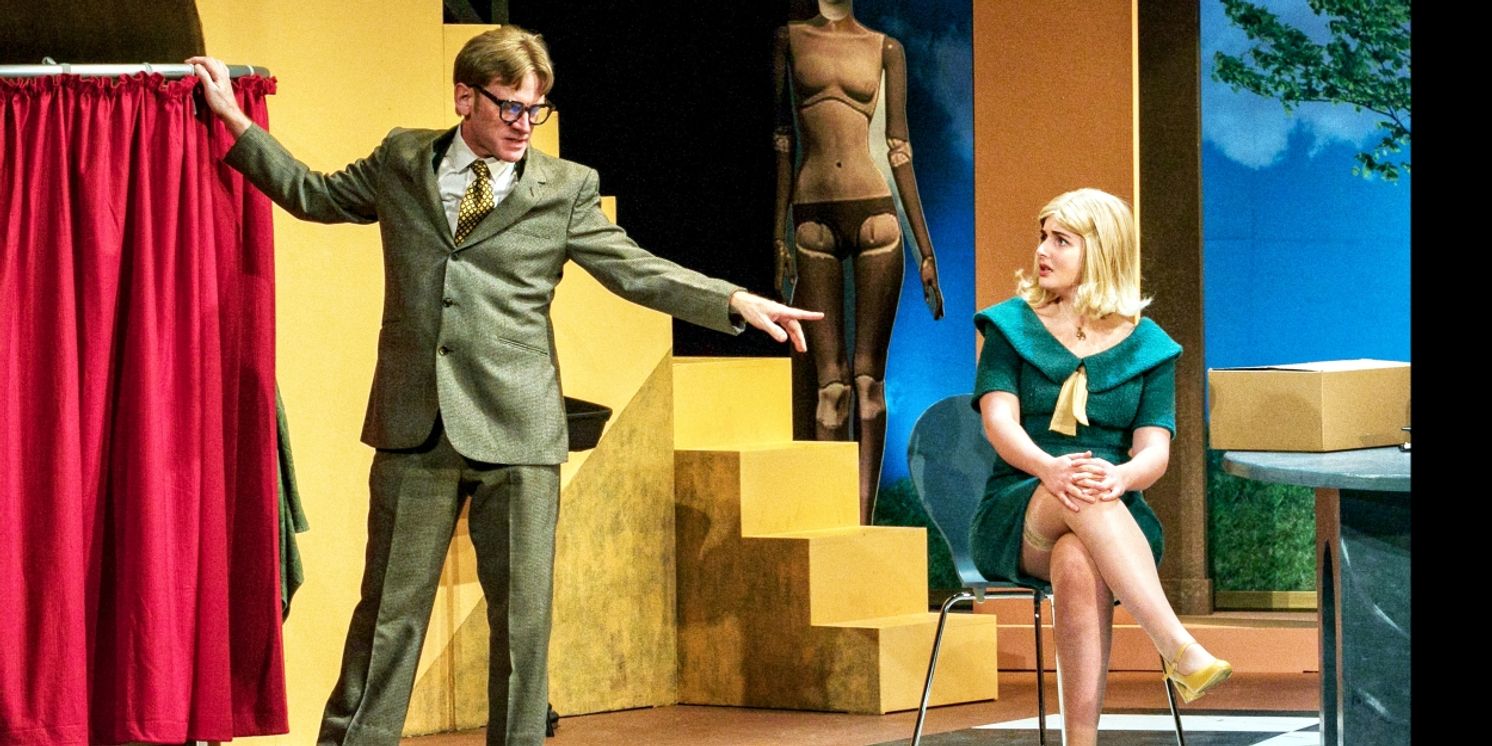Review: WHAT THE BUTLER SAW, Perth Theatre
An interesting insight into a subversive 1960s play, but it hasn't aged well

![]() Cross-dressing, guns, psychiatry, politics, incest, adultery and accidental overdoses interlace in Joe Orton's final and most subversive play. Combining manic farce with constant social critique, What the Butler Saw outraged and shocked its 1960s audiences at a time where attitudes to morality and gender were slowly shifting. Unfortunately, to a modern audience it feels dated.
Cross-dressing, guns, psychiatry, politics, incest, adultery and accidental overdoses interlace in Joe Orton's final and most subversive play. Combining manic farce with constant social critique, What the Butler Saw outraged and shocked its 1960s audiences at a time where attitudes to morality and gender were slowly shifting. Unfortunately, to a modern audience it feels dated.
Dr Prentice (John Dorney) is a psychiatrist trying to seduce his prospective secretary Geraldine Barclay (Alana Jackson). He convinces her to undress under the false pretense of a medical examination (already giving creepy vibes) then hides her behind a curtain when Mrs Prentice (Holly Smith) unexpectedly enters. Meanwhile Mrs Prentice is struggling with disposing pornographic pictures taken of her and a young page boy. Government inspector Dr Rance (Jack Lord) turns up and the plot becomes more and more chaotic as relationships intertwine, identities are mistaken and the question of who is really sane dominates.
Bek Palmer's surreal cartoon-like set is intriguing to look at. Collaged mannequins and body parts pay homage to the disordered minds that psychologists study. It feels like a dollhouse, where characters are expected to fulfill specific roles to succeed in the challenging game of life.
The play is well-acted and well-staged. Dorney's Dr Prentice undergoes a clever descent into madness as the play progresses and exhibits strong physical comedy. Lord's Dr Rance presents strong comedic timing with Orton's long challenging monologues.
Unfortunately, many jokes feel old-fashioned. A lot of content hasn't aged well - references to r*pe, child assault and overdosing are used casually and often as the butt of a joke. Dr Prentice's insistence at tricking a woman into sleeping with him makes him inherently unlikeable lowering his stakes. I'm sure Orton probably had motives here, but it just feels uncomfortable. The cross-dressing, sex references and penis sculptures were no doubt shocking in Orton's time, but for today's audience (who see similar things frequently in the media) these climactic devices fall a bit flat.
The play is an interesting insight into the work of a revolutionary, iconic and witty playwright. Orton turned conventional theatre upside down challenging authority, celebrating difference and rejecting conventional morality. It is worth seeing for its historical significance.
What the Butler Saw was at Perth Theatre until 4 May
Photo credit: Sheila Burnett
Reader Reviews
Videos


